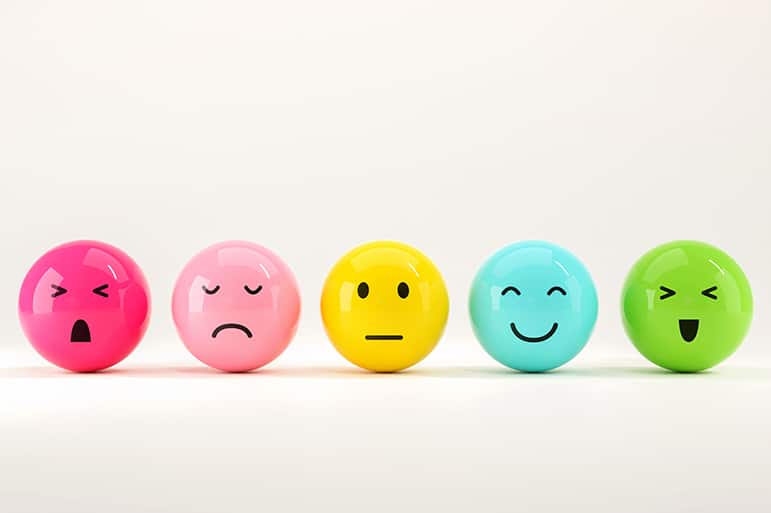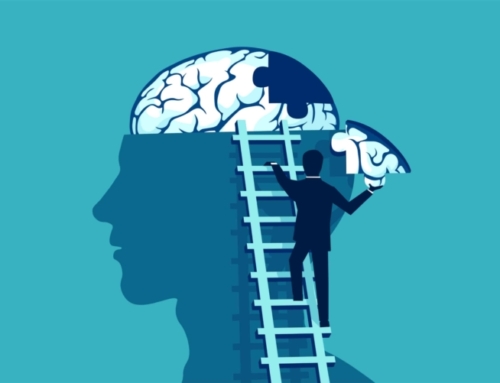What makes a person happy is pretty simple. Here are the top five things that studies consistently show are associated with life satisfaction:
- Social interaction: people who spend quality time with other people are happier on average.
- Meaning and purpose: if you believe that your life has value beyond meeting your own needs, then you are likely to have a sense of focus and satisfaction.
- Showing gratitude: taking time to count your blessings is a sure way to elevate your mood.
- Showing kindness: doing good things for other people, whether for family or friends or for strangers provides a sustaining glow for an extended period of time.
- Seeing the positive: optimists are on average happier. If you train yourself to focus on the positive, you’ll feel better.
All of these points, I’m sure, seem like common sense. So, given the fact that the way to greater happiness is so well known, why are we not happier than we are?
One part of the answer is that each of us seems to have a happiness set point: we tend to drift back to our natural level of happiness after either really good things or really bad things happen. Our “happiness temperature” is set by our temperament. It’s biology.
But there is room to maneuver, of course, to take steps that can raise your average level of daily happiness, joy, comfort, satisfaction, and contentment. So why don’t we all do more of the things we KNOW will make a positive difference in our lives?
The answer is that we tend to do the things each day that we’ve been doing for a long time. To become happier and more successful entails doing and thinking differently than we’re accustomed to. But I think you already knew that. The real question is what is it that so frequently keeps us from doing more of the things we know would be beneficial to us? The deeper answer is that we are creatures of habit – that is the way we are built.
So how do people develop new habits? I’ll provide you with two answers. To change what you do and how you think requires one, to do it consistently for a long enough time to establish a new habit. And two, to establish a new habit, it’s helpful to build in reminders throughout your day to trigger the new way of acting and thinking (as well as helping to abort any old habits as they inevitably creep back).
Here is what I do. I have 5 colored rings I keep on my car dashboard and on my desk, each of a different color: red, yellow, blue, green, and black. Each represents a different quality that I strive for to become the better person I wish to become. With the colors more or less arbitrarily chosen, here is my list of what each color represents:
- Black means “do what is difficult”: I start with black because it is the hardest. It is my reminder at the start of each day to confront the task that is most difficult for me to face so that I can get it done and move on without that burden hanging over me.
- Yellow means “be kind”: I tend to be short-tempered and have acted many times in my life with impulsive acts of unkindness that I then deeply regret. I end up hurting the ones I love and I also feel diminished. My yellow bracelet reminds me to engage in acts of kindness and avoid displays of ill temper. You know the saying, “In the end, only kindness matters.”
- Green means “feel gratitude”: When you make a conscious effort to feel gratitude you are in effect focusing on all the bounty that you have in your life: your health, your loved ones, your material wealth, or even your life itself. Consider the opposite, envy. When you envy you are bringing to conscious awareness what you lack and what others have. And then you feel resentment, a bad feeling certainly, about the difference. A focus on endless bounty versus on resentful lack: it is up to each person to choose what to spend their time focusing on.
- Red means “do what is fun”: Red is the color of passion, of danger, of surprise. I consciously plan to incorporate activities that bring me joy, happiness, and satisfaction into each day. Sometimes that means doing something nice with my wife, or with my kids, or by myself. Since I’m a partial introvert, I also need alone time to recharge.
- Blue means “keep healthy”: This bracelet reminds me to get some exercise, moderate my diet, get enough sleep, and avoid excessive alcohol and caffeine.
One thing I’ve learned is that it is hard to be perfect. All too often I act and think in ways I’m working to avoid. I’m all too aware of my shortcomings. But there have been so many times I’ve acted in better ways, in kinder, more healthful, and more joyful ways since using my ‘daily rings’ as compared to before.
Let me know what you think. Better yet, let me know what ways you use to develop and maintain habits of happiness and success.
Until next time,
Dr. Jack
LanguageBrief
“The chains of habit are too weak to be felt until they are too strong to be broken.” – Samuel Johnson
“The best kind of happiness is a habit you’re passionate about.” – Shannon Adler
“The soul grows into lovely habits as easily as into ugly ones, and the moment a life begins to blossom into beautiful words and deeds, that moment a new standard of conduct is established …” – Kate Douglas Wiggin







Leave A Comment